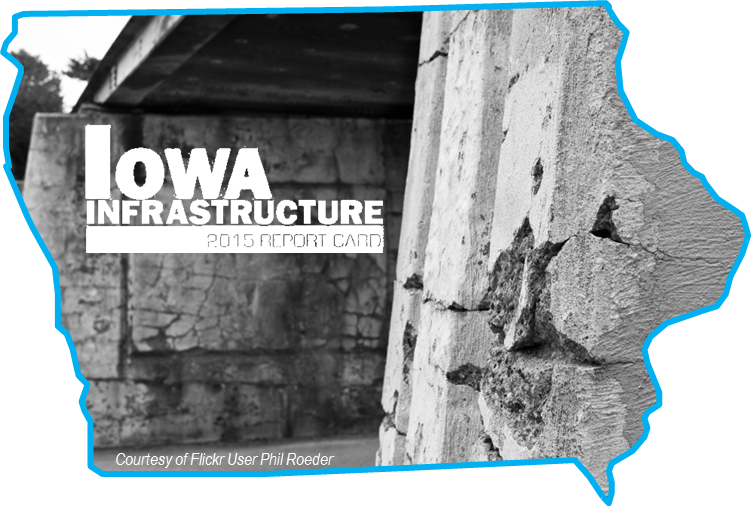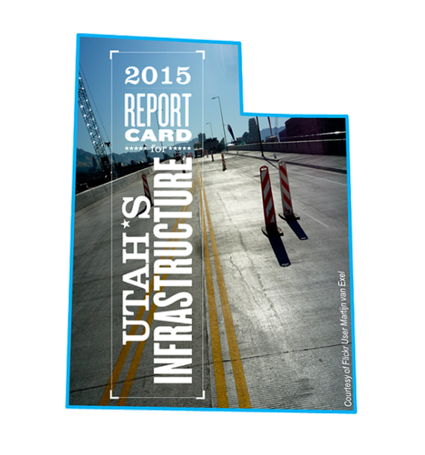Innovations in Infrastructure: Necessity is the mother of invention
August 5th, 2016 | By: Olivia Wolfertz
With 42 percent of the major urban highways in the U.S. congested and the problem only predicted to increase, there is a great need for our road and traffic systems to be modernized to prepare for and accommodate this congestion. Fortunately, cities around the nation have started utilizing technological solutions to help alleviate some of these mounting transportation frustrations. A few ways engineers and manufacturers will be able to ameliorate these problems through traffic signal synchronization, talking cars and future road construction, as illustrated in this infographic on “Technology and the Future of America’s Infrastructure”. one example of how this is happening right now is in Los Angeles, where magnetic sensors were set up across the city to send real-time traffic data to a central command, which adjusts the timing of traffic signals based on congestion. This process took more than 20 years to complete, but has reduced travel times by 12 percent while increasing average speeds by 16 percent. Cities like San Francisco and Seattle are implementing electronic signs and sensors to reveal available parking spaces in order to help alleviate parking space related congestion. In Pennsylvania, the Department of Transportation (PennDOT) has created a new web application called Traffic Signals Asset Management (TSAMS), a pre-populated database that consolidates information about 8,700 traffic signals located on state routes to improve the management of traffic signals. Recently the U.S. DOT announced its commitment to using technology to make transportation more accessible through programs like the Accessible Transportation Technologies Research Initiative (ATTRI), which seeks technology-based solutions to improving transportation accessibility and mobility. Each of these innovative steps forward are promising to the future of our nation’s transportation system. To read more about innovative solutions across different infrastructure sectors, check out ASCE’s #GameChangers report.Congratulations USDOT Smart Cities Challenge Winner, Columbus!
June 28th, 2016 | By: America's Infrastructure Report Card
The U.S. Department of Transportation (USDOT) revealed Columbus, Ohio, was the winner of their Smart Cities Challenge, showcasing an innovative transportation strategy made possible through investment in smart city technology. Like ASCE’s #GameChangers project which shows inspiring examples of innovative trends happening with our nation’s infrastructure, all 77 of the proposals submitted to the Challenge from across the country show how much potential can be unleashed with innovative concepts and new ideas. Columbus’ proposal calls for autonomous transit shuttles between neighborhoods and urban centers, expansion of electric vehicle infrastructure, and universal fare cards that allow cardholders to pay for any form of public transit using a variety of payment methods. Columbus and USDOT officials believe these investments will modernize transportation across the city, while opening up greater access to healthcare and jobs for families living in lower income areas. As the winner of the Smart Cities Challenge, Columbus will receive $40 million from USDOT, $10 million from Vulcan, Inc. and $90 million in matching grants from other local private partners to bring their proposal into reality. Raising America’s infrastructure grades starts with great projects like this one in Columbus, but every project should be an opportunity to change the infrastructure game and build the cities of the future. Tell us what’s happening near you to change the infrastructure in, around, and under your city.Infrastructure in the News: Innovative and sexy are in, old and dilapidated are out
June 3rd, 2016 | By: Olivia Wolfertz
With Dam Safety Awareness Day and the kickoff of Innovation Month, water, transportation, and dam infrastructure continue to be a topic of discussion in the media. Monday was National Dam Safety Awareness Day, which raised awareness about the need for dam safety protocols and procedures to protect the public from danger potentially caused by failing dams. Alabama is the only state without a dam safety program, which means the state does not have a record of how many dams there are in the state or what condition they are all in. Without a dam safety program, Alabama also doesn’t have an Emergency Action Plan (EAP) that is required in other states. While this is only one state, it underscores the need for nationwide awareness about the urgency of proper dam safety procedures. You can learn more by visiting livingneardams.org. In addition to dam safety, this week is the start of the U.S. DOT’s Innovation Month, which highlights the importance of confronting our infrastructure challenges and striving to develop new ideas and solutions that move us forward. ASCE’s Gamechangers report identifies great examples of innovative projects across a number of infrastructure sectors, and shows the benefits that communities experience when they choose to invest and innovate. Innovation, however, is simply not enough to restore our water, roads, dams and bridges that need serious attention. A story in CBS detailed the state of our “crumbling bridges, cratered roads and leaking metros,” explaining how people prefer groundbreakings and openings over the routine work of infrastructure maintenance. Because of this mindset, the cost of fixing the country’s aging infrastructure is estimated to be around $1 trillion over the next decade. An article in Forbes discussed the need to make infrastructure “sexy” again, emphasizing the tremendous importance that well-maintained infrastructure plays in our quality of life and overall competitiveness as a nation. An article in VICE News shone a light on U.S. rail infrastructure in comparison with the recent opening of the Gotthard Base Tunnel in Switzerland, underscoring the investment needs of our rail infrastructure. In order to improve our infrastructure and build a foundation for innovation, it is important that local, state and federal governments work together to find long-term, sustainable funding that will allow for such improvement.Infrastructure in the News: Innovation Sends Snow Packing
January 29th, 2016 | By: Olivia Wolfertz
With winter storm Jonas blasting the Northeast with record-setting amounts of snow, our nation’s already stressed water pipes, roofs and roads were put to the test. While major snow events bring many challenges, they also provide opportunities for innovation. One innovation, coined by The University of Nebraska-Lincoln’s Chris Tuan, is a special concrete mixture that is designed to heat up and melt any snow or ice that settles on it. But Tuan is not the only groundbreaker. A family in N.J. developed its own geothermal solar snow-melt system that applies heat to the driveway and walkways to melt snow. In response to the havoc cold temps can cause on water mains and potholes, a team of innovators in Syracuse, N.Y. has taken steps toward installing magnetic sensors in their water pipes to reduce water main breaks, and is working with a company that has developed technology to map the city’s road deficiencies. Because the FAST Act will only provide limited funds for infrastructure maintenance, there is still great need for new ways to fund infrastructure. Because of this funding gap, many states are seeking ways to generate funding they need for projects. California is moving ahead with a Vehicle Miles Traveled (VMT) program that will involve 5,000 driver volunteers who track their mileage and pay taxes based on miles driven rather than how many gallons of gas they consume. And Alabama and Oregon are considering raising their state gas tax to generate more funding for infrastructure projects.s With intense winter weather wearing on our roads and water infrastructure and increased need for funding, it is still critical that elected leaders at the federal, state and local levels continue to prioritize investment into the backbone of our economy.2015 Infrastructure Year in Review
January 4th, 2016 | By: America's Infrastructure Report Card
App Makes Contacting Legislators a Breeze
 In 2015, both Utah and Iowa rapidly passed transportation legislation reforms on the heels of the release of ASCE’s State Infrastructure Report Cards. In fact, ASCE has released a recent Report Card in 12 of the 15 states that have taken recent significant action on infrastructure. These states include: GA, ID, IA, KY, MD, NE, NH, NC, PA, SD, UT, VT, VA, WA, and WY.
Sharing the Report Card with Business and Industry Leaders
The Report Card for America’s Infrastructure continues to draw interest from business and industry groups nationwide. Almost 50 Report Card presentations have been given by ASCE leaders to groups ranging from the Dallas Regional Chamber of Commerce to the US/Canada P3 Forum to the Association of Actuaries. Request a presentation to your group by emailing reportcard@asce.org.
In 2015, both Utah and Iowa rapidly passed transportation legislation reforms on the heels of the release of ASCE’s State Infrastructure Report Cards. In fact, ASCE has released a recent Report Card in 12 of the 15 states that have taken recent significant action on infrastructure. These states include: GA, ID, IA, KY, MD, NE, NH, NC, PA, SD, UT, VT, VA, WA, and WY.
Sharing the Report Card with Business and Industry Leaders
The Report Card for America’s Infrastructure continues to draw interest from business and industry groups nationwide. Almost 50 Report Card presentations have been given by ASCE leaders to groups ranging from the Dallas Regional Chamber of Commerce to the US/Canada P3 Forum to the Association of Actuaries. Request a presentation to your group by emailing reportcard@asce.org.
 Highlighting #GameChangers and Solutions
In July, ASCE released Infrastructure #GameChangers report to highlight the innovative ways communities across the country are modernizing infrastructure. The report highlights trends in energy, freight, transportation and water infrastructure that are changing the way we design, plan, and build projects of the future.
Read the full ASCE 2015 Year in Review here.
Highlighting #GameChangers and Solutions
In July, ASCE released Infrastructure #GameChangers report to highlight the innovative ways communities across the country are modernizing infrastructure. The report highlights trends in energy, freight, transportation and water infrastructure that are changing the way we design, plan, and build projects of the future.
Read the full ASCE 2015 Year in Review here.



 */ ?>
*/ ?>













